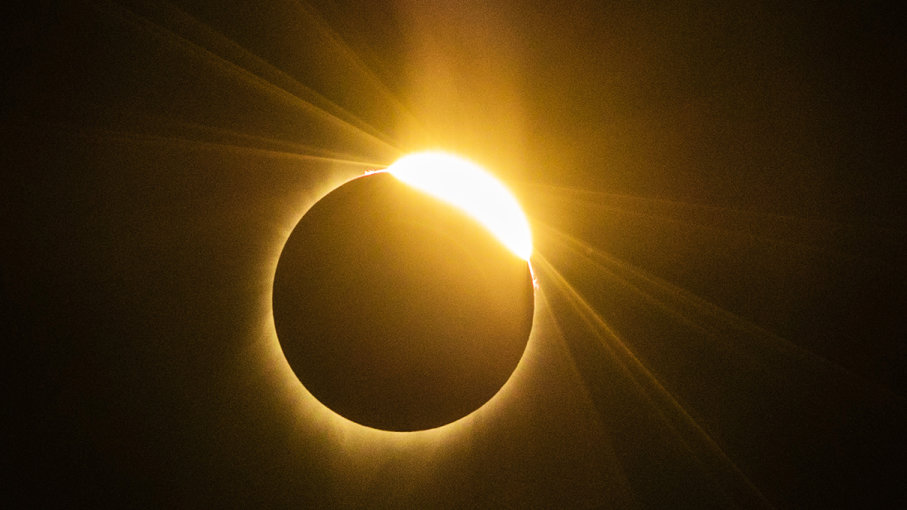Spectacular Solar Eclipse Leaves U.S. in Awe

It’s been 99 years since a total solar eclipse crossed the United States from coast to coast. So it’s no surprise that citizens came out in droves on Aug. 21 to watch the moon pass between the sun and Earth, completely blocking out the sun in some locations. Many parts of the country were overrun with people gazing up at the sky to witness what could have been a once-in-a-lifetime astrological event — a total solar eclipse. Those along this 70-mile-wide (112-kilometer-wide) path of totality from Oregon to South Carolina were part of a rare event when the moon blocked out all of the sun’s light, temperatures dropped and darkness fell — even if it was just for a few minutes.
Solar eclipse 2017
A child looks toward the sky in awe at the Cradle of Aviation Museum in Garden City, New York during the eclipse on Monday, Aug. 21, 2017, when the moon passed in between the sun and Earth, blocking out sunlight.
NASA
Solar eclipse 2017
The International Space Station crossed the path of the eclipse three times as it orbited above the continental United States at an altitude of 250 miles (402 kilometers).
NASA
Solar eclipse 2017
This composite image, made from seven frames, shows the International Space Station as it passes the sun at roughly 5 miles (8 kilometers) per second during the solar eclipse.
NASA
Solar eclipse 2017
Employees at NASA’s Johnson Space Center in Houston show how the solar eclipse changes the shadows cast by the sun.
The corona is the outermost part of the sun’s atmosphere that is visible during a total solar eclipse. The red spots, called Baily’s beads, occur where the moon grazes by the sun and the lunar
Solar eclipse 2017
Solar eclipse watchers were ecstatic as the clouds broke minutes before totality during the total solar eclipse from Isle of Palms, South Carolina, one of the last vantage points where totality was
One city in the path of Monday’s eclipse was Carbondale, Illinois. Carbondale also has the distinction of being in the path of totality during the next solar eclipse sweeping across North America on April 8, 2024. “It’s going to go from Mexico to Texas, into the Ohio River Valley, upstate New York and New England, and it even crosses Carbondale,” Alex Young, a solar astrophysicist with NASA’s Goddard Space Flight Center, said during a live webcast from Charleston, South Carolina, Monday. It typically takes about 375 years for a total solar eclipse to pass over the same place on Earth twice. So Carbondale, you can go ahead and start planning now.



 Creators of mankind
Creators of mankind Description of “Tall white aliens”
Description of “Tall white aliens” Where they came from?
Where they came from? About hostile civilizations
About hostile civilizations The war for the Earth
The war for the Earth “Tall white aliens” about eternal life
“Tall white aliens” about eternal life Video: “Nordic aliens”
Video: “Nordic aliens” Aliens
Aliens Alien encounters
Alien encounters The aliens base
The aliens base UFO
UFO Technology UFO
Technology UFO Underground civilization
Underground civilization Ancient alien artifacts
Ancient alien artifacts Military and UFO
Military and UFO Mysteries and hypotheses
Mysteries and hypotheses Scientific facts
Scientific facts


















